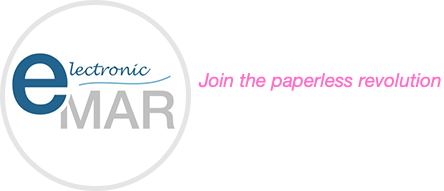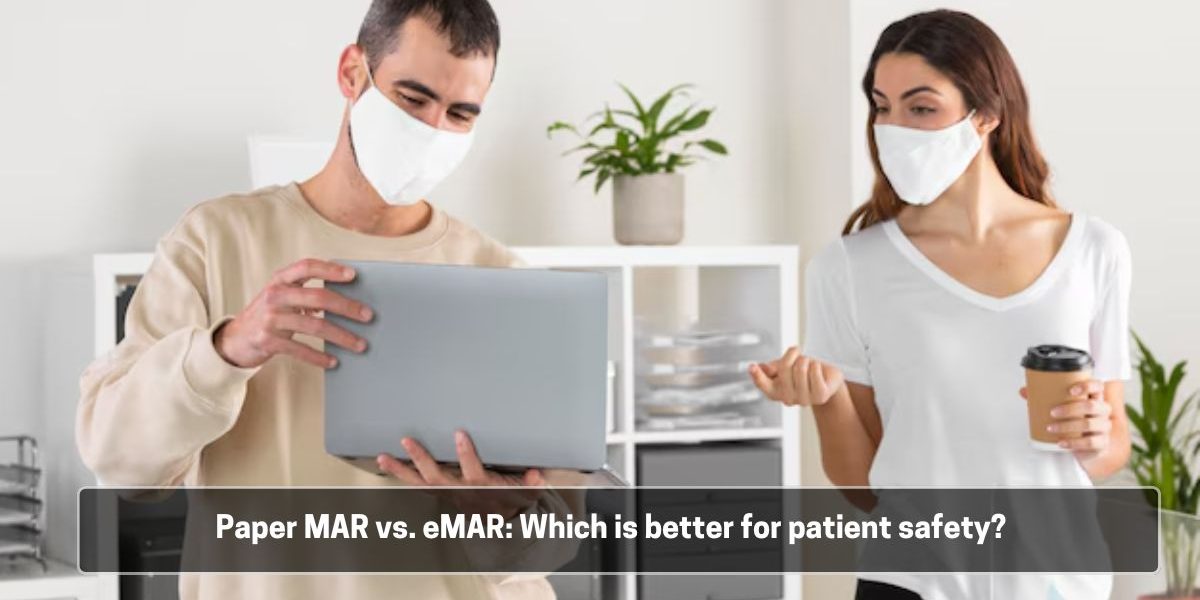Medication administration is an important aspect of healthcare. And, it is intricately linked with patient safety. Traditionally, paper-based Medication Administration Records (MARs) have been the standard in healthcare settings for tracking and administering medications. They offer a straightforward and familiar method for documenting patient care. However, the introduction of electronic Medication Administration Records (eMAR) has changed medication administration. Here, we will explore the features of both paper MARs and eMAR systems to determine which is more effective in safeguarding patient well-being.
Paper MARs have been a staple in healthcare for many years. Their simplicity and ease of use make them an attractive option, especially in settings where technology is limited. With paper MARs, healthcare providers can quickly jot down medication orders, and all information is immediately visible on paper sheets. There is no need for special equipment or technical skills, making it accessible to all staff members. However, despite these advantages, paper MARs come with several significant limitations that can impact patient safety.
- Vulnerability to errors
One of the most notable weaknesses of paper MARs is their susceptibility to human error. Handwritten entries can be misinterpreted due to illegible handwriting or the use of unclear abbreviations. For instance, a simple mistake in reading a handwritten dosage could result in a patient receiving too much or too little of a medication. Furthermore, transcription errors can occur when transferring information from a doctor’s prescription to the MAR, increasing the risk of incorrect medication administration.
- Limited accessibility
Paper MARs are physical documents, meaning they can only be accessed in the location where they are stored. This limitation can create challenges when healthcare providers need to compare current medication records with past ones or when different departments need access to the same information. Retrieving old records for analysis or review can be time-consuming and cumbersome, potentially delaying important decisions about patient care.
- Difficulty in tracking changes
Another significant drawback of paper MARs is the difficulty in tracking changes made to medication orders. When a medication order is altered, it can be challenging to determine who made the change and when it occurred. This lack of traceability can lead to confusion among healthcare staff, increasing the risk of medication errors and compromising patient safety.
- Susceptibility to damage and loss
Paper records are also vulnerable to physical damage and loss. A spilled drink, a tear, or simple misplacement can result in the loss of critical information. Lost or damaged records can disrupt medication schedules and lead to gaps in patient care, ultimately putting patients at risk.
eMAR: the modern solution
In contrast, eMAR systems leverage technology to enhance medication safety and streamline healthcare workflows. By automating many of the processes that are manual in paper MARs, eMAR systems offer several key advantages that positively impact patient well-being.
- Reduced errors
One of the most significant benefits of eMAR systems is their ability to reduce errors. Unlike paper MARs, where handwritten entries can be misinterpreted, eMAR systems use digital order entry. This setup minimises the risk of misinterpretations and transcription errors. Also, eMAR systems can automatically calculate dosages, reducing the likelihood of administering incorrect amounts of medication. This is particularly important in complex cases where precise dosages are critical.
- Improved accuracy and alerts
eMAR systems enhance accuracy by incorporating automated checks and balances. For example, they can flag potential adverse drug reactions or contraindications before a medication is dispensed. This proactive approach helps to prevent errors before they reach the patient. These systems also ensure that all healthcare providers involved in a patient’s care have access to the most current and accurate medication information.
- Enhanced accessibility
Another major advantage of eMAR systems is their enhanced accessibility. Unlike paper MARs, which are tied to a specific physical location, eMAR records can be accessed in real-time from any authorised device. This feature facilitates better communication and collaboration among healthcare professionals.
- Detailed audit trails
eMAR systems also offer the benefit of detailed audit trails. Every change made to a medication order is automatically tracked, complete with timestamps and the name of the person who made the change. This level of traceability ensures greater accountability. In the event of a medication error, healthcare providers can quickly trace back through the records to determine what went wrong and take steps to prevent future occurrences.
- Integration with other systems
One of the most powerful features of eMAR systems is their ability to integrate with other healthcare technologies, such as pharmacy databases and electronic health records (EHRs). This integration creates a comprehensive view of a patient’s medical history, including medications, allergies, and other critical information. By having all this information in one place, healthcare providers can make more informed decisions, reducing the risk of errors and improving overall patient care.
With eMAR medication management has become more accurate and reliable. Its impact on patient safety is profound as it offers numerous advantages over traditional paper-based systems.







